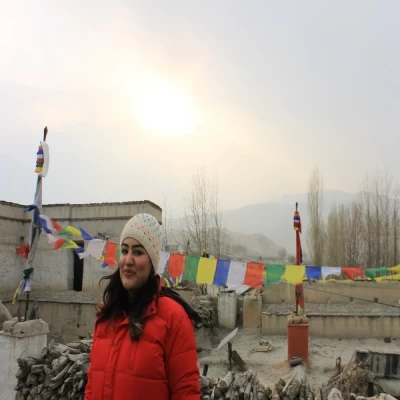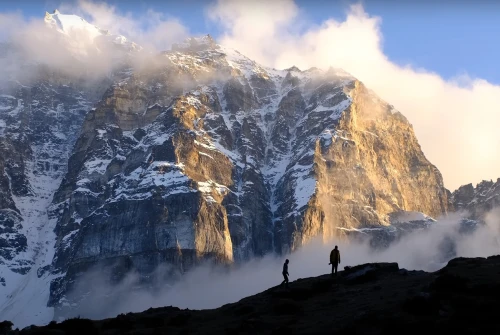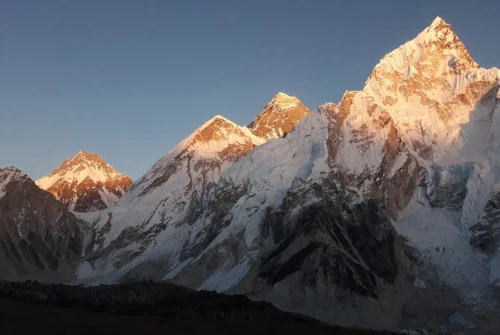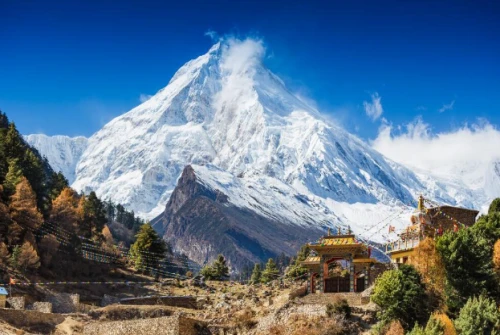Trekking the Manaslu Circuit is a life-changing experience that immerses you in the pristine beauty of the Himalayas, remote villages, and ancient Tibetan culture. As one of Nepal’s lesser-trodden yet most rewarding treks, it offers dramatic mountain scenery, cultural richness, and the thrill of crossing the high Larkya La Pass at 5,160 meters. However, the overall experience of this trek heavily depends on one key factor: choosing the right season.
The varying Himalayan climate throughout the year affects everything from trail accessibility and visibility to temperature and accommodation availability. Each season presents its own set of challenges and charms, lush greenery and solitude in monsoon, crystal-clear skies in autumn, blooming rhododendrons in spring, and serene snowscapes in winter. Picking the best time ensures you enjoy not only the views but also a safer, more comfortable journey through this remote and rugged landscape.
In this comprehensive guide, we break down each season in detail, covering weather conditions, trekking difficulty, cultural experiences, and what type of trekkers each season is best suited for. Whether you're a seasoned adventurer or a first-time hiker, this article will help you make an informed decision on when to embark on the unforgettable Manaslu Circuit Trek.
Overview of Manaslu Circuit Trek
The Manaslu Circuit Trek encircles Mount Manaslu (8,163 meters), the eighth-highest peak in the world. It takes adventurers through the Gorkha district, crossing the dramatic Larkya La Pass (5,160 meters), offering raw nature, Tibetan-influenced culture, and fewer crowds compared to the Annapurna or Everest regions.
Best Time for Manaslu Circuit Trek by Season
Spring (March to May): Peak Season with Blooming Trails
Spring is widely considered the best time to trek the Manaslu Circuit, offering an ideal blend of weather, trail conditions, and natural beauty. During these months, the region experiences mild temperatures at lower altitudes, with daytime readings between 10°C to 20°C, while higher elevations may dip below freezing at night. The skies remain predominantly clear, allowing for stunning panoramic views of the Manaslu range and neighboring peaks like Himlung, Ngadi Chuli, and Ganesh Himal.
One of the key highlights of spring is the blooming of rhododendrons and other alpine flowers that blanket the forests, creating a vibrant and colorful trail. Trekkers will find the trail lively yet not overly crowded, making it perfect for those seeking both beauty and relative solitude. Wildlife sightings are also more frequent, and the longer daylight hours provide ample time for exploration and acclimatization. Spring is also the safest season for crossing the Larkya La Pass due to stable snow and trail conditions.
Autumn (September to November): Clear Skies and Festive Atmosphere
Autumn is another prime season for the Manaslu Circuit Trek, known for its crisp air, deep blue skies, and high visibility of the Himalayan peaks. Following the monsoon, the trails are washed clean, and the air is fresh, making this an excellent time for trekking. Temperatures remain comfortable during the day (around 8°C to 18°C), but begin to drop as the season progresses, especially at night in higher altitudes. One of the biggest draws of trekking in autumn is the opportunity to witness traditional Nepali festivals such as Dashain and Tihar, celebrated with great enthusiasm in local villages along the route.
This provides trekkers with an immersive cultural experience, adding a unique layer to the journey. While this season attracts more trekkers due to its favorable conditions, it doesn't reach the congestion levels of the Annapurna or Everest regions. Autumn is also a perfect time to capture stunning photography of snow-capped peaks reflected in alpine lakes and clear mountain skies.
Monsoon/Summer (June to August): Challenging Yet Verdant
The monsoon or summer season is the least recommended period to undertake the Manaslu Circuit Trek due to heavy rainfall, particularly in the lower regions. The weather during this time is hot and humid, with temperatures ranging from 15°C to 25°C at lower elevations. Frequent rain showers result in slippery trails, risk of landslides, swollen rivers, and obscured mountain views. However, for the daring and well-prepared trekker, this season offers a chance to witness the Himalayan landscape at its greenest. The forests and farmlands are lush and alive, and waterfalls are in full force.
Moreover, the trail sees very few trekkers, which means complete tranquility for those who venture out. The rain-shadow areas closer to the Tibetan border, such as Samdo and the higher reaches beyond Namrung, receive less rainfall and are relatively drier. If trekking during the monsoon, it's essential to come equipped with waterproof gear, insect repellent, and a strong tolerance for wet and muddy conditions.
Winter (December to February): Quiet Trails with Harsh Conditions
Winter brings extreme cold and challenging trail conditions to the Manaslu Circuit. Temperatures at higher elevations can plummet to -20°C or lower, and the Larkya La Pass is often closed due to heavy snow accumulation. Despite the difficulties, winter offers a uniquely serene experience for experienced trekkers seeking solitude and a pristine snow-covered landscape. The skies tend to remain clear, and visibility is excellent, but the harsh cold and limited daylight require serious preparation. Trails from villages like Samagaon and Dharmasala can become treacherous, and many teahouses at higher elevations shut down for the season, requiring more logistical planning.
However, for those who are well-prepared with proper winter gear, microspikes, and the guidance of a knowledgeable local guide, winter trekking rewards with unmatched tranquility, rare wildlife sightings, and crisp views of the snow-draped Himalayas.
Best Months to Trek the Manaslu Circuit
Month | Weather Condition | Trekking Condition | Crowd Level | Recommendation |
March | Cold mornings, clear skies | Dry trails, blooming flora | Medium | Best Start |
April | Warmer, vibrant valleys | Ideal conditions | Medium | Recommended |
May | Pre-monsoon warmth | Possible haze | High | Good Option |
June–August | Wet, humid | Risk of landslides | Low | Not Advised |
September | Clear, post-monsoon | Perfect trail conditions | Medium | Best Start |
October | Peak clarity, festive | High traffic | High | Top Month |
November | Cold evenings, dry | Still stable weather | Medium | Good Option |
December–Feb | Harsh cold, snow | High pass may be closed | Very Low | For Experts Only |
Practical Tips for Planning the Trek
Choose the Right Permit Timing
Manaslu Circuit requires:
Restricted Area Permit (RAP)
Annapurna Conservation Area Permit (ACAP)
Manaslu Conservation Area Permit (MCAP)
Permits are easier to process in peak seasons when travel agencies operate at full capacity.
Book Accommodation in Advance
In spring and autumn, teahouses in places like Samagaon and Dharmasala get booked early. Pre-booking avoids last-minute hassles.
Acclimatize Properly
Plan for the rest of the days at Samagaon or Samdo for acclimatization. This significantly reduces altitude sickness at Larkya La Pass.
Gear Up According to Season
Spring/Autumn: Layered clothing, windproof jackets, trekking poles.
Winter: Heavy-duty down jackets, snow gaiters, microspikes.
Monsoon: Waterproof gear, insect repellents, and anti-leech socks.
Final Recommendation: When Should You Go?
Trekkers Type | Best Season |
First-Time Trekkers | Spring or Autumn |
Experienced Adventurers | Winter |
Cultural Enthusiasts | Autumn |
Budget Travelers | Early Spring or Late Autumn |
Botanists | Monsoon (with precautions) |
Conclusion
The Manaslu Circuit Trek offers a diverse, thrilling, and culturally rich Himalayan adventure. The best time to trek largely depends on your goals—whether it's majestic mountain views, lush green forests, cultural interactions, or snowy solitude. For most trekkers, March to May and September to November are the most recommended windows, offering optimal conditions for an unforgettable journey.
For a successful trek, plan well, choose your season wisely, and always consult the All Nepal Hiking Team.




